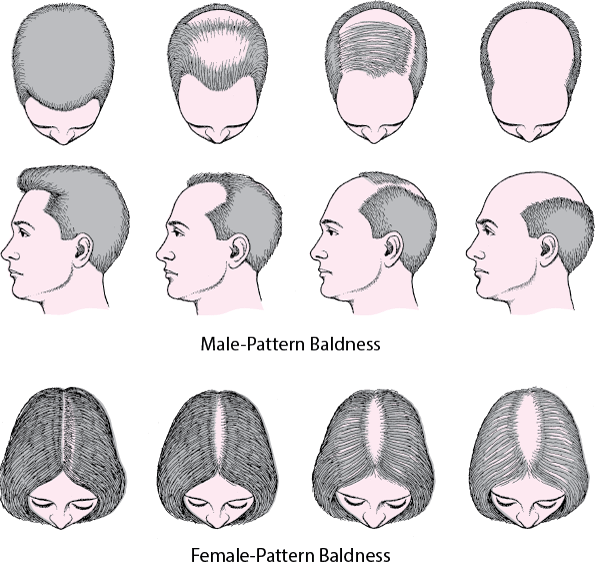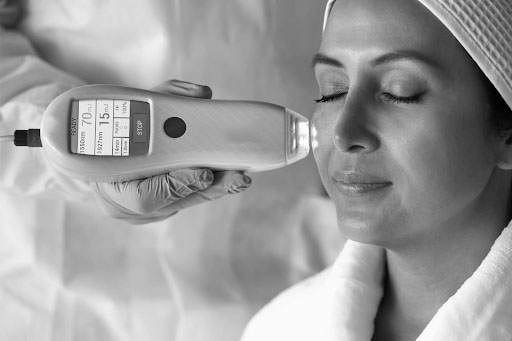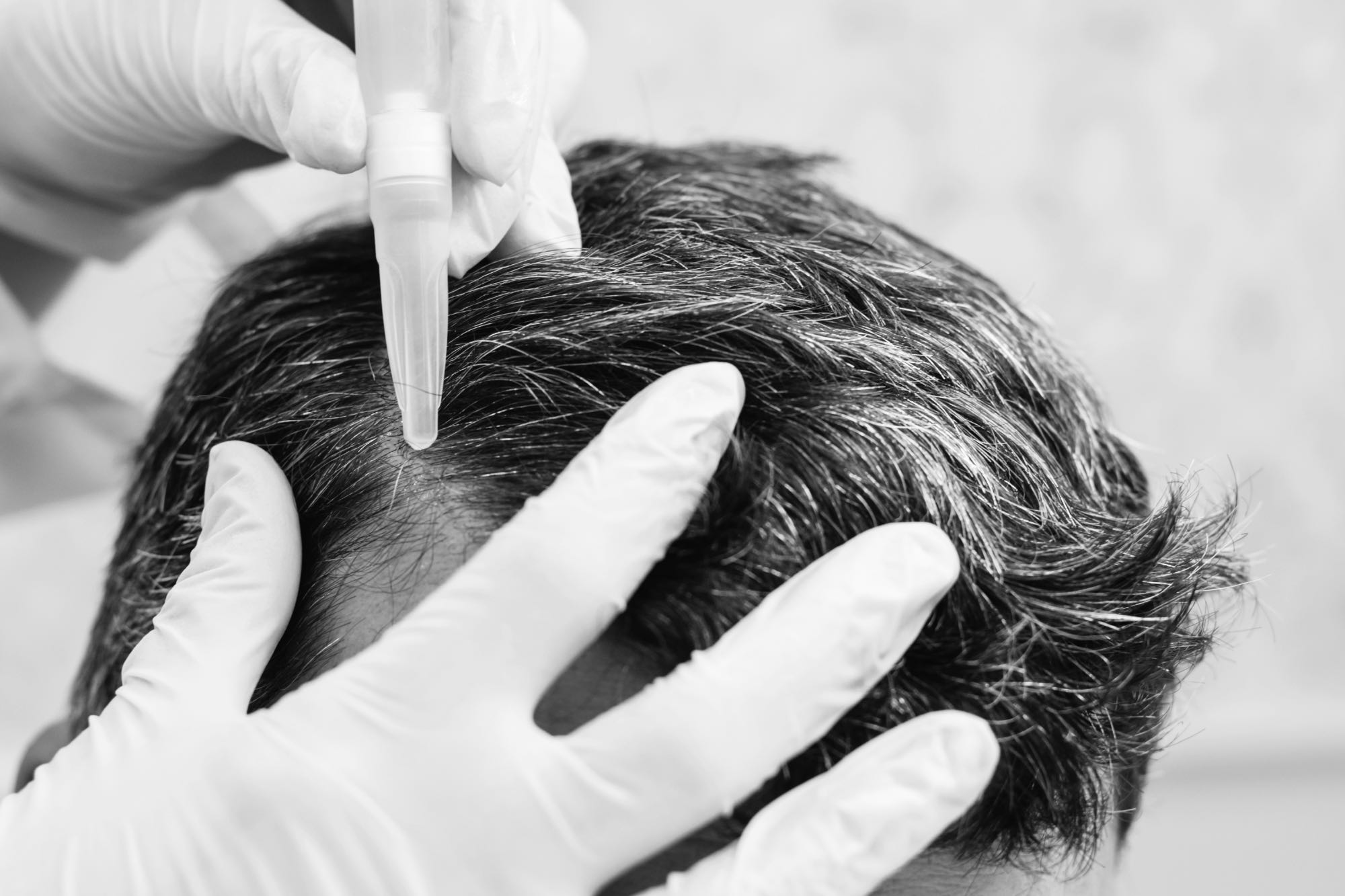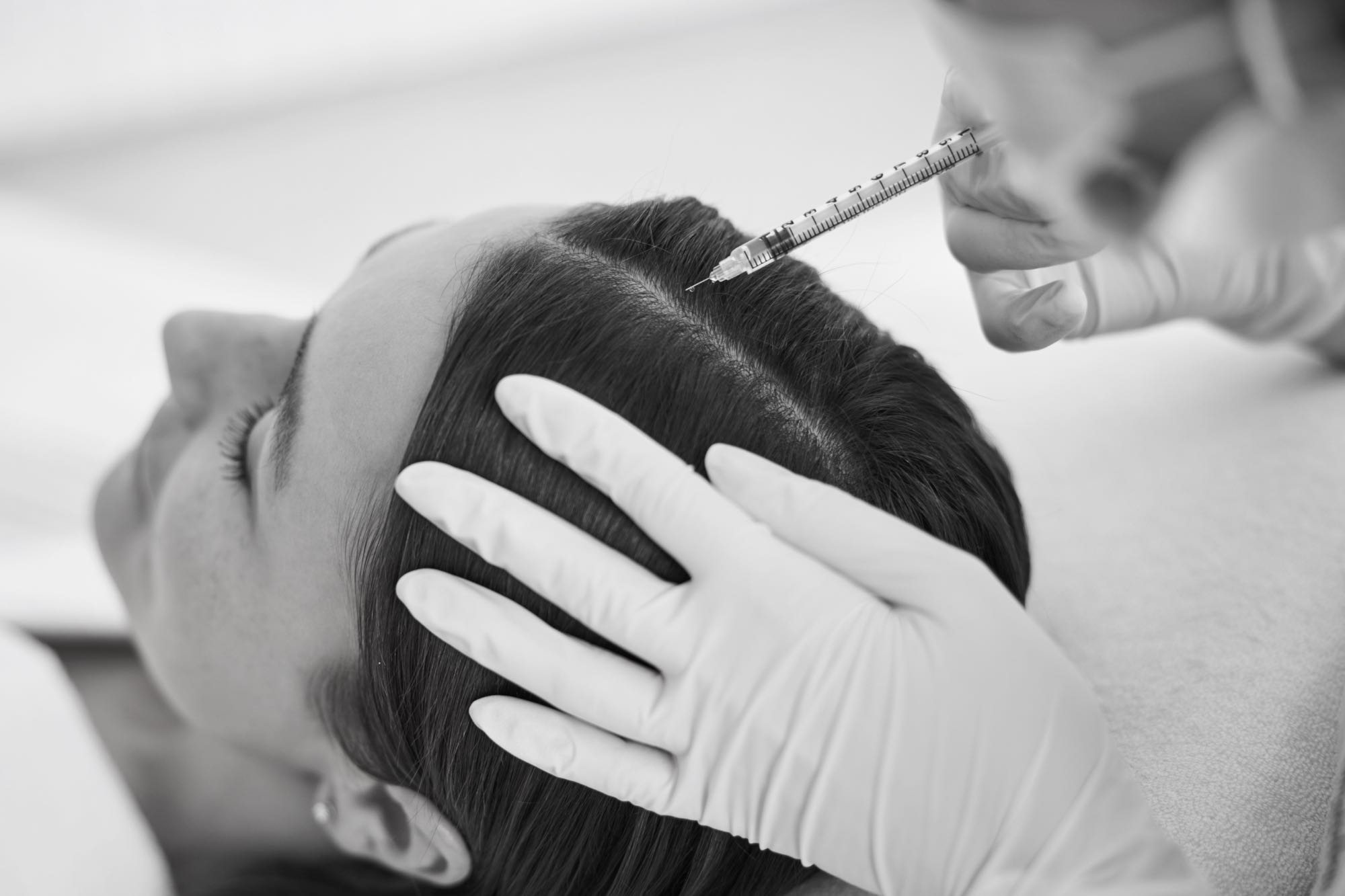Treatments
Hair Loss (Alopecia)
What is Alopecia?
Alopecia is a common autoimmune disorder that often results in unpredictable hair loss.
Usually, hair loss appears as small quarter-sized patches, though it can also affect larger areas of the scalp. When all the scalp hair is gone, it’s known as alopecia totalis, and when extended to the entire body, it’s called alopecia universalis. Alopecia doesn’t discriminate by age, gender, or race and can happen to anyone, but it’s more common to develop before turning 30.
What are the Causes?
This condition occurs when a person’s white blood cells mistakenly attack their hair follicles, causing them to shrink and slow down hair growth significantly. The exact reason why the immune system behaves this way remains a mystery.
While scientists haven’t pinpointed the precise trigger, it appears that genetics play a role, as Alopecia is more common in individuals with close family members who have the same condition. In fact, 1 out of every 5 people with this condition has a family member who also experiences Alopecia.
Additionally, research has shown that many individuals with a family history of Alopecia also have personal or family backgrounds of other autoimmune disorders, such as atopy (a condition marked by heightened allergic reactions), thyroiditis, and vitiligo.
Contrary to popular belief, there is limited scientific evidence supporting the idea that stress directly causes Alopecia. While extreme stress might potentially trigger the condition in some cases, recent research primarily points towards a genetic basis for its development.
What are the common types of hair loss or Alopecia?
Androgenetic Alopecia is the most common cause of hair loss in men. This is due to a combination of hormones (androgens) and a genetic predisposition. It is characterized by a receding hairline and hair loss on the top and front of the head. A similar form that occurs in women is known as female pattern hair loss. This results in thinning hair in the mid-frontal area of the scalp and is generally less severe compared to men.


What are the treatment options?
Treatment options include Topicals (Minoxidil 3% or 5%), Supplements (Nourkrin Hair Growth+ inCLINIC supplement), AnteAge MD Hair Growth Factor Solution treatment and Low Level Laser Therapy (LLLT), etc. Please see the respective treatment subpages for more details.





